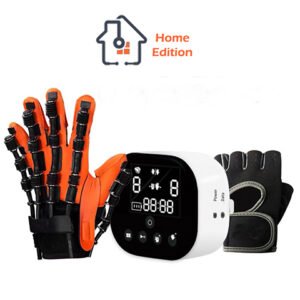Robot-Assisted Rehabilitation
Over the past decade, Robot-assisted rehabilitation has played a prominent role in improving hand and finger function for stroke survivors. The applications of robotics have rapidly expanded from the industrial environment to human assistance in rehabilitation and functional improvements. Rehabilitation engineering has enhanced the quality of lives of individuals with disabilities, offering dedicated training that performs better than conventional methods.
Robot-assisted rehabilitation may be used independently by patients with different levels of impairment. For example, the Robotic Rehabilitation Gloves: SIFREHAB-1.1 permits collecting a quantifiable measure of subjective performance, repeating treatment protocols without the need for continuous involvement of therapists saving a significant amount of human labor that may lead to high cost.
In fact, traditional rehabilitation methods require several sessions of training, inducing impractical and unaffordable therapies for many patients. Robotic therapy techniques guarantee a safe, intensive, and task-oriented rehabilitation at relatively moderate costs. For example, the Portable Rehabilitation Robotic Gloves: SIFREHAB-1.0 allows post-stroke patients to receive their treatment from their homes thanks to its handy size and lightweight.
The Robotic Rehabilitation Gloves: SIFREHAB-1.1 can apply forces with precision, improving accuracy and reducing variance. These actions are potentially effective to strengthen muscle, ROM, and motor coordination. Advanced robots provide also tactile feedback that may correct the impaired movements. In addition, robot-assisted therapies may be quantified easily and collect a number of parameters useful to track the patient’s status (e.g. spasticity or level of voluntary control)



